If you want your lawn to look fabulous this summer, work needs to start in early spring. Here are our top tips on how to prepare your lawn for summer.
- Tackle moss infestations
- Aerate the soil
- Scarify to get rid of dead matter
- Give your lawn a good feed
- Have a sensible mowing regime
Tackling moss in your lawn
Moss is one of the most common problems I have come across in my greenkeeping and lawn care careers. It’s a wonderfully successful plant which seems to love the climate here in Ireland. But it doesn’t do our lawns any favours.
Healthy grass is good at outcompeting other plants. Moss is often a symptom that something is suppressing the grass growth. It could be shady conditions, compacted soil, a thick layer of thatch or simply a lack of nutrients in the soil.
My approach to moss is not to apply chemicals, it is to change the conditions so that lawn grasses can outgrow the unwanted plants. That starts in early spring with aeration, scarification, feeding and, if necessary, overseeding.
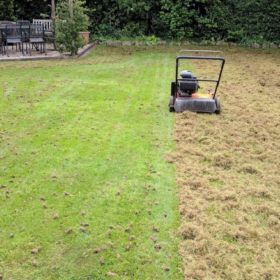
Aeration and scarification will help to control moss in your lawn without using chemical weedkillers
Aerate the soil beneath your lawn
Moss loves compacted soil that doesn’t drain well. You can change both of those conditions by aerating. I like to use a hollow tine aerator in spring time. It makes little holes in the soil which lets air get to the roots and allows water to percolate through the soil.
Again, you can hire an aerator or you can ask a lawn care professional to do the work for you. It’s less expensive than you might think and will make an enormous difference to the way your lawn looks in late spring and summer.
Scarifying your lawn in spring
Moss tends to grow fastest in winter time, so come spring, a lawn can be pretty choked up with the stuff.
Scarifying is like a good spring clean. It clears all of the moss, dead leaves and weaker plants out of the lawn so that the soil can breathe.
Start by mowing the lawn and removing the clippings. That makes scarification much easier. You could scarify a small area using a springtine rake. However it’s hard work, it takes a long time and you could easily be a bit too thorough and end up exposing too much of the crown of the plants. That makes them vulnerable to drought.
Far better to hire a scarifier from your local tool hire shop, or ask for professional help.
Waste from scarifying is surprisingly bulky. In theory, it can go on the compost heap (provided you haven’t used any herbicides on your lawn lately) but you might find there’s just too much of it.
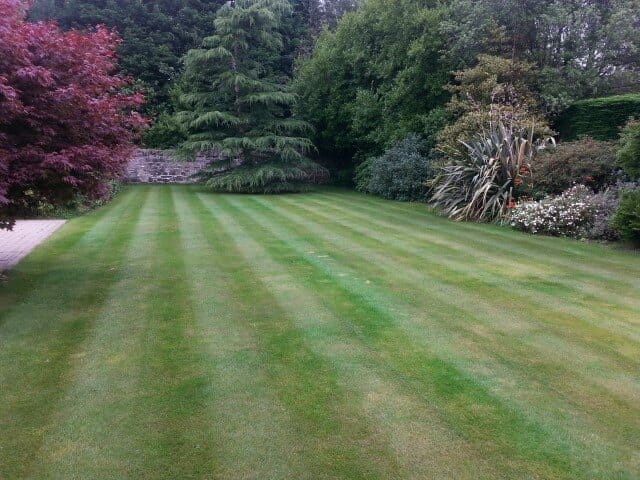
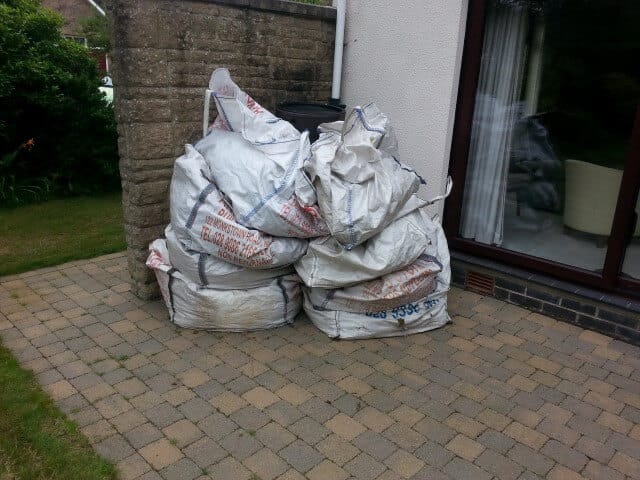
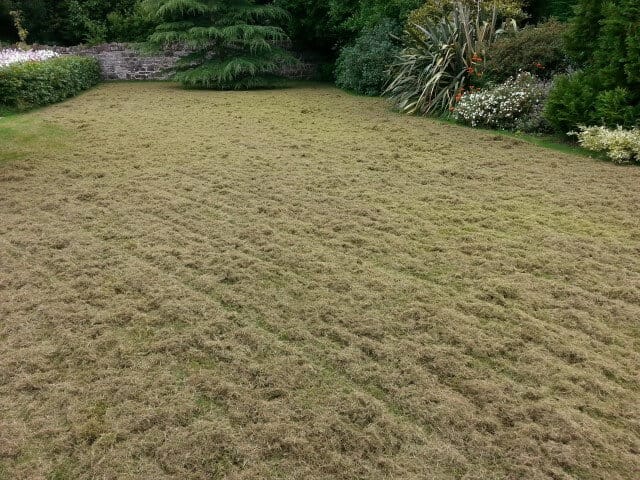
This lawn had a thick layer of thatch that was spoiling the colour. Just look how much debris was removed by scarifying!
Feeding your lawn in spring
Just like yourself, your pets and your favourite athletes, the health and performance of your lawn is largely dependent on its diet. Regular application of a good quality lawn feed is a must and it’s never more important than in spring. Make sure your lawn wakes up to a good breakfast!
If your lawn is particularly weak as it goes into the growing season, I would recommend supplementing the feed with a seaweed tonic. More information about lawn tonics here
Don’t forget to feed regularly throughout spring and summer to keep those grass plants nice and green and vibrant.
Spring and summer mowing regimes
The way you mow can literally make or break your lawn. For a really healthy lush lawn, raise your mower blades to no less than 5cm in early spring. Trust me, so long as all the grass is the same length it will look beautiful. And it’s better able to cope with wear and tear and with late frosts.
Mow little and often. As the growing season gets into full swing you might find yourself mowing twice a week. Don’t be tempted to scalp your lawn and let it grow longer. All that does is weaken the plants and leave them vulnerable to disease.
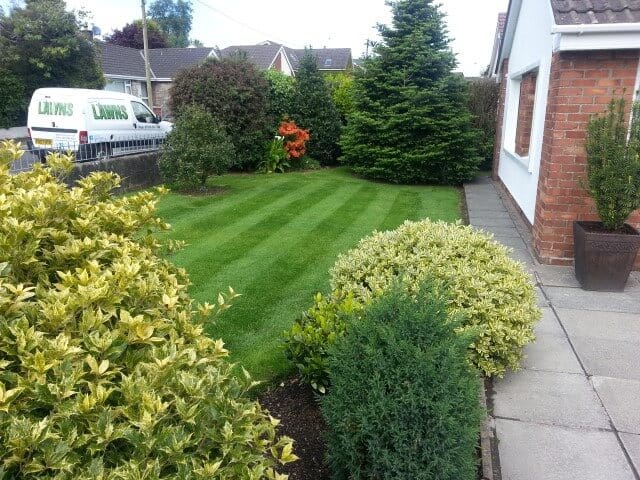
If you like a close mown lawn, first of all find out what species of grass are in your lawn. Some species are better suited to close mowing than others. A ryegrass based lawn is never going to be happy being shaved down to 6mm high.
Mowing heights can be gradually reduced over the growing season, but at the first signs of drought, lift the blades again. Slightly longer grass is better at shading the soil and retaining moisture.
Professional help to prepare your lawn for spring and summer
Some essential spring lawn care jobs are physically quite demanding. Others, such as feeding, need precision application and good quality products.
If you don’t own the machinery to help you and worry about calibrating spreaders etc, hiring a qualified lawn care professional is a good investment. You will be free up your time for other things and your lawn will benefit from expert care.
For lawn care help in Belfast and the surrounding areas, call Premier Lawns for a free, no obligation quote.
Related features
How often should you apply lawn treatments?

